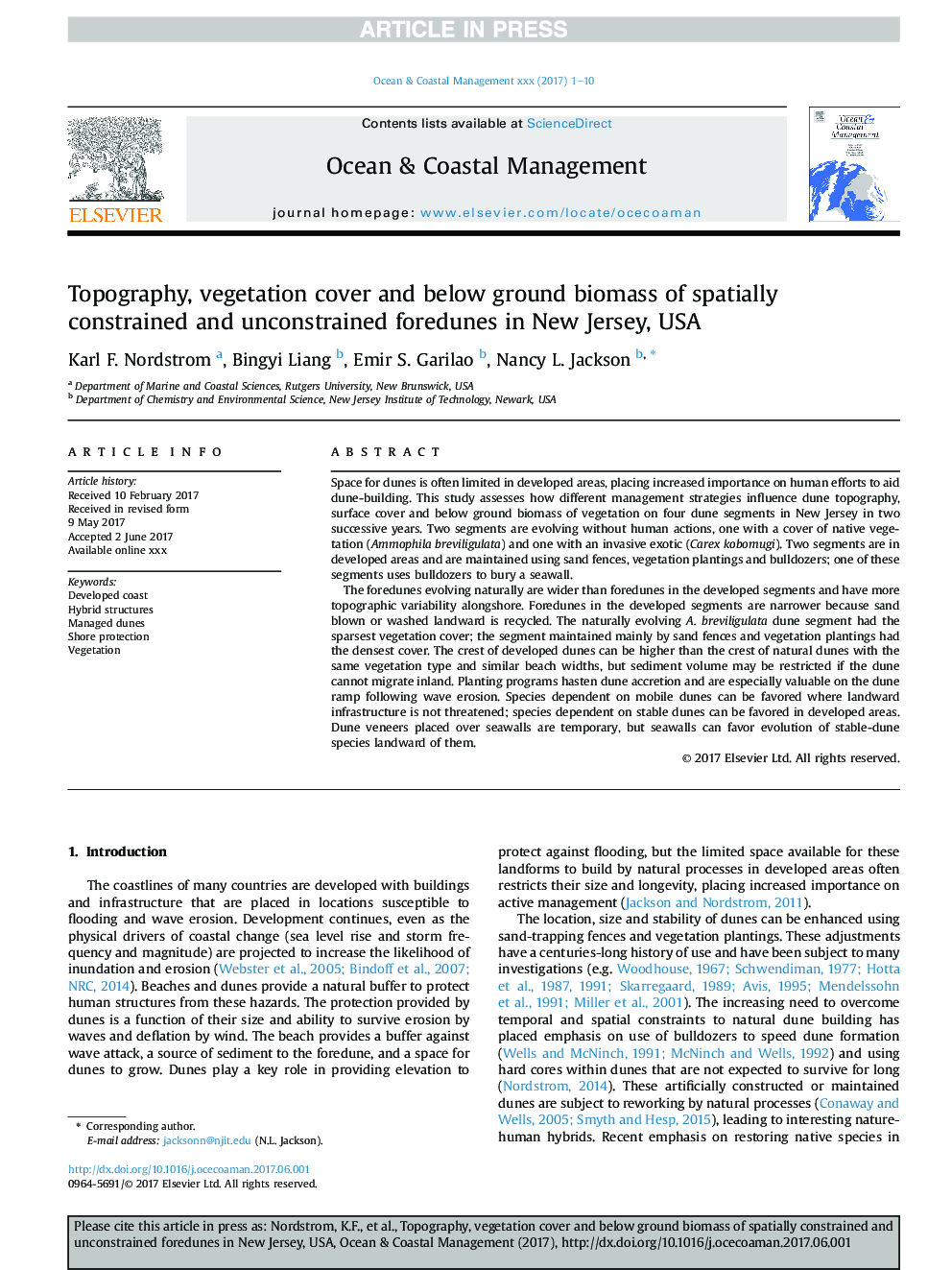| Article ID | Journal | Published Year | Pages | File Type |
|---|---|---|---|---|
| 8060756 | Ocean & Coastal Management | 2018 | 10 Pages |
Abstract
The foredunes evolving naturally are wider than foredunes in the developed segments and have more topographic variability alongshore. Foredunes in the developed segments are narrower because sand blown or washed landward is recycled. The naturally evolving A. breviligulata dune segment had the sparsest vegetation cover; the segment maintained mainly by sand fences and vegetation plantings had the densest cover. The crest of developed dunes can be higher than the crest of natural dunes with the same vegetation type and similar beach widths, but sediment volume may be restricted if the dune cannot migrate inland. Planting programs hasten dune accretion and are especially valuable on the dune ramp following wave erosion. Species dependent on mobile dunes can be favored where landward infrastructure is not threatened; species dependent on stable dunes can be favored in developed areas. Dune veneers placed over seawalls are temporary, but seawalls can favor evolution of stable-dune species landward of them.
Related Topics
Physical Sciences and Engineering
Earth and Planetary Sciences
Oceanography
Authors
Karl F. Nordstrom, Bingyi Liang, Emir S. Garilao, Nancy L. Jackson,
